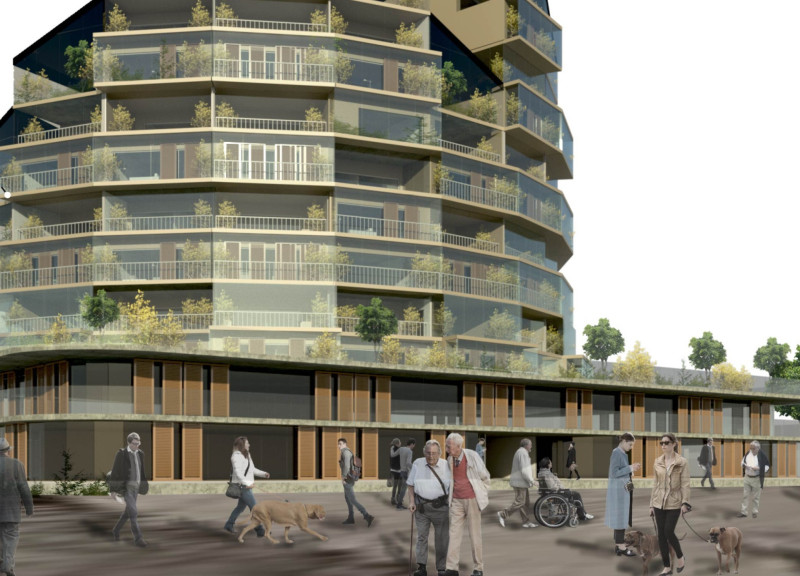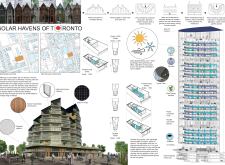5 key facts about this project
Solar Havens of Toronto integrates thoughtful design and sustainability within the urban landscape of Toronto, Canada. The project focuses on energy efficiency while promoting community living through residential units that take advantage of the abundant sunlight during the colder months. Inspired by local Victorian townhouses, the design transforms them into wedge-shaped forms that maximize southern exposure, enhancing passive solar gain and reducing energy costs for residents.
Architectural Concept
The design emphasizes the importance of sunlight in providing warmth and light during winter. By arranging the units to face south, the layout improves natural heating and reduces the need for additional heating sources. This approach not only makes the buildings more comfortable but also allows for various configurations, whether in urban infill sites or when stacked in denser areas.
Materials and Construction
High-performance windows are a key feature of the project. They allow ample natural light while helping to retain heat within the units. This choice reflects a commitment to energy efficiency and sustainable practices. The use of a hybrid timber and steel construction method provides strength and durability while also being mindful of environmental impacts, as it can lessen waste produced during construction.
Community Engagement
Creating shared spaces is another important aspect of the design. Public circulation routes and communal areas within the mixed-use podium encourage residents to interact with one another. These spaces help cultivate a sense of community in the urban setting, making it easier for people to feel connected. Additionally, the flexibility of adjustable internal walls allows occupants to customize their living areas to suit their needs, accommodating different lifestyles and family structures.
Sustainability Features
Winter gardens are featured in the design, offering green spaces that remain usable even in cold weather. These gardens not only enhance the living experience but also promote biodiversity within the city. By integrating nature into everyday life, the project aims for a sustainable approach that resonates with the residents and the environment.
The blend of energy-efficient materials, adaptable designs, and a focus on community creates a living environment that addresses modern urban challenges while respecting the local context. Residents benefit from a space that is purposeful and connected to the world around them.



















































